 A special holiday message from our beloved blind Ambassador of Vision – Tom Sullivan
A special holiday message from our beloved blind Ambassador of Vision – Tom Sullivan
My wife Patty loves every aspect of the Christmas season, and she begins celebrating the yule tide even before Thanksgiving. The transforming of our house with traditional decorations brings her a marvelous sense of family and holiday season. She loves to look at every ornament remembering how we acquired it. As the lights turn on outside our house, she is busy making sure that every bulb on our tree is placed just so to give the room a warmth that in every way reflects her commitment to the true spirit of the season.
While I am listening to football upstairs, she’s singing along with Celine Dion as she completes the visual picture that for Patty confirms that there really are important traditions that make our home a place of love, beauty, and peace. For the record, let me say that I really do enjoy Christmas even though I offer half-hearted complaints that Patty plays carols starting even before Turkey Day. The truth is…I love them just as much as she does.
For over thirty years we went to Colorado every Christmas to ski, and those experiences were wonderful to just be in the mountains and feel the cold nipping at your nose as you fly down a ski slope. We often would take a sleigh ride on Christmas Eve with hot chocolate spiced with peppermint schnapps. Listening to a children’s choir and being with people we love always seems to make things a little more right with the world. So I really do love Christmas, but when I consider Patty’s ebullient joy in the visuals of the holiday, I admit it makes me just a little sad to know that I’ll never be able to see them.
I realize that people go to extraordinary lengths in their decorating zeal and that certainly some of their elaborate choices that brighten the neighborhood could be considered over the top, but when Patty’s carols are playing and she’s enjoying the happiness of singing along with the decorations just so, I know that what she’s reflecting is her true commitment to her faith and the celebration of the season that she treasures.
So open your hearts and your eyes and take in the true experience of the Christmas spirit. It’s my hope that you’ll consider supporting Discovery Eye Foundation’s commitment to preserving vision allowing more people every year to enjoy not just the smell of a Christmas tree, or the taste of a Christmas toast, the touch of a hug from a loved one on Christmas morning, or the beautiful sounds of Silent Night sung by the voice of a child.
From all of us at Discovery Eye, we wish you a Merry Christmas and Happy Holidays!
 Tom Sullivan
Tom Sullivan
DEF’s Ambassador of Vision
sullivanvision.com


 Healthy Aging Month is an annual health observance designed to focus national attention on the positive aspects of growing older. Aging is a process that brings many changes. Vision loss and blindness, however, do not have to be one of them. There are several simple steps you can take to help keep your eyes healthy for the rest of your life.
Healthy Aging Month is an annual health observance designed to focus national attention on the positive aspects of growing older. Aging is a process that brings many changes. Vision loss and blindness, however, do not have to be one of them. There are several simple steps you can take to help keep your eyes healthy for the rest of your life.
 UV Protection – Sunglasses for children should block 100% of UV radiation as well as between 75 – 90% of visible light. Any sunglasses you buy should have this information provided in the packaging
UV Protection – Sunglasses for children should block 100% of UV radiation as well as between 75 – 90% of visible light. Any sunglasses you buy should have this information provided in the packaging 
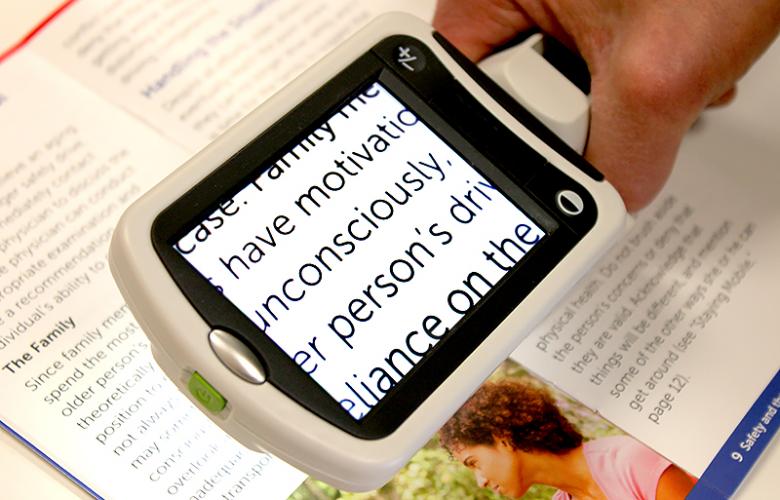 Portable magnifiers and lighted magnifiers- offer magnified reading on the go. Perfect for menus, shopping lists, label reading, and more, portable magnifiers can fit in your pocket, purse, or be worn on the belt for quick, easy use.
Portable magnifiers and lighted magnifiers- offer magnified reading on the go. Perfect for menus, shopping lists, label reading, and more, portable magnifiers can fit in your pocket, purse, or be worn on the belt for quick, easy use.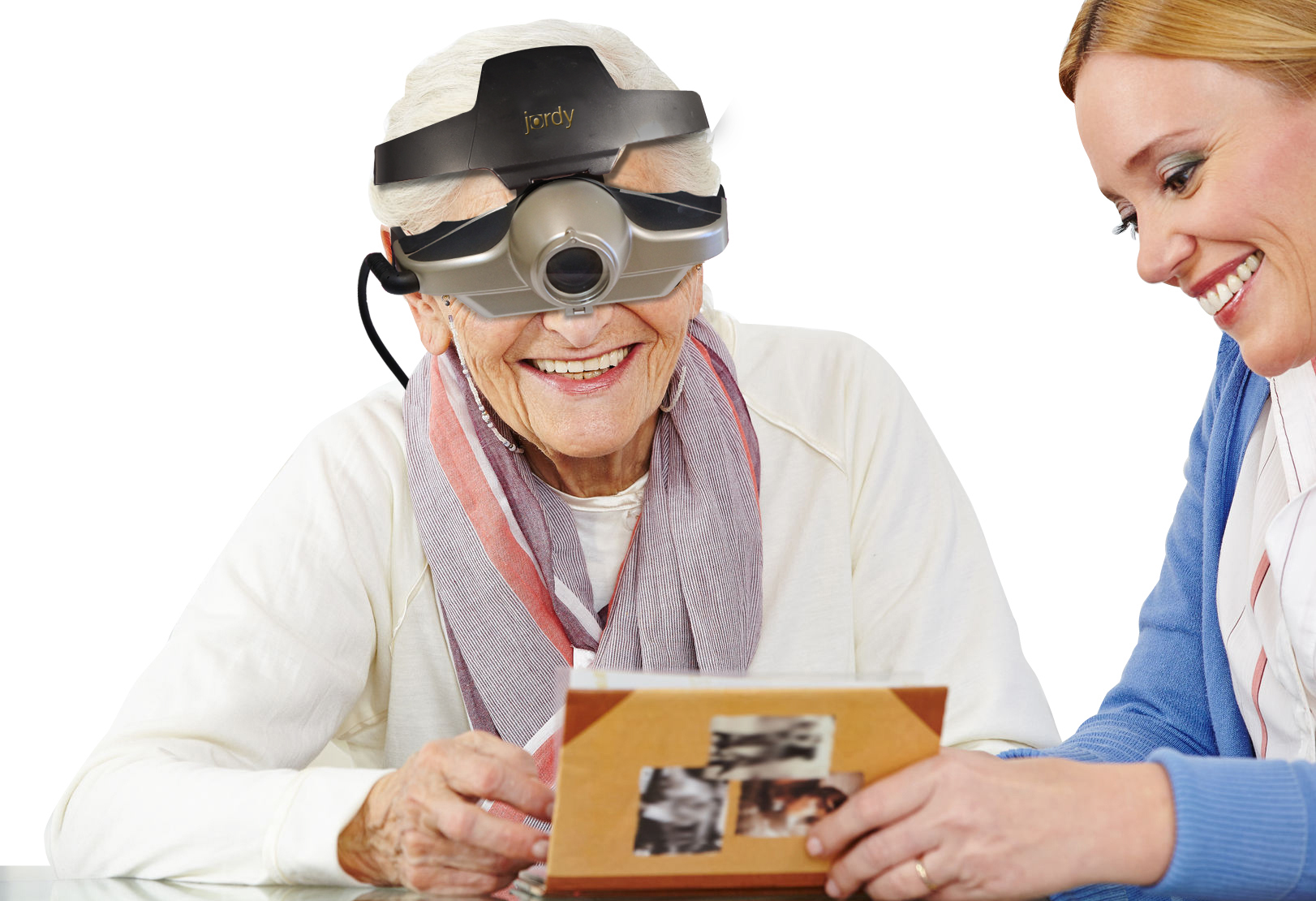 Wearable magnifiers – wearable technology is the future for those with low vision who live an active lifestyle. Wearable options make it possible to see and take part in everyday tasks, such as reading and recognizing faces.
Wearable magnifiers – wearable technology is the future for those with low vision who live an active lifestyle. Wearable options make it possible to see and take part in everyday tasks, such as reading and recognizing faces.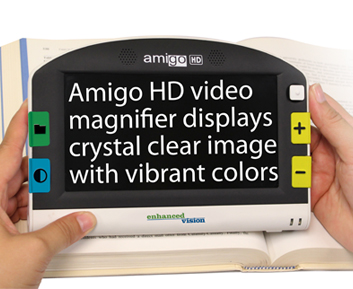 Transportable magnification screens– are perfect for close up viewing as well as distance viewing. These great viewers offer great flexibility, from watching TV to using the mirror image feature for self-viewing. There are APPS for smart phones that can be used to magnify reading material.
Transportable magnification screens– are perfect for close up viewing as well as distance viewing. These great viewers offer great flexibility, from watching TV to using the mirror image feature for self-viewing. There are APPS for smart phones that can be used to magnify reading material. Desktop devices for reading books, bills or letters – these have large, bright screens. A reading table offers visual aid for reading books, optional computer connectivity and more. This family of portable magnification units offers up to 75x magnification.
Desktop devices for reading books, bills or letters – these have large, bright screens. A reading table offers visual aid for reading books, optional computer connectivity and more. This family of portable magnification units offers up to 75x magnification.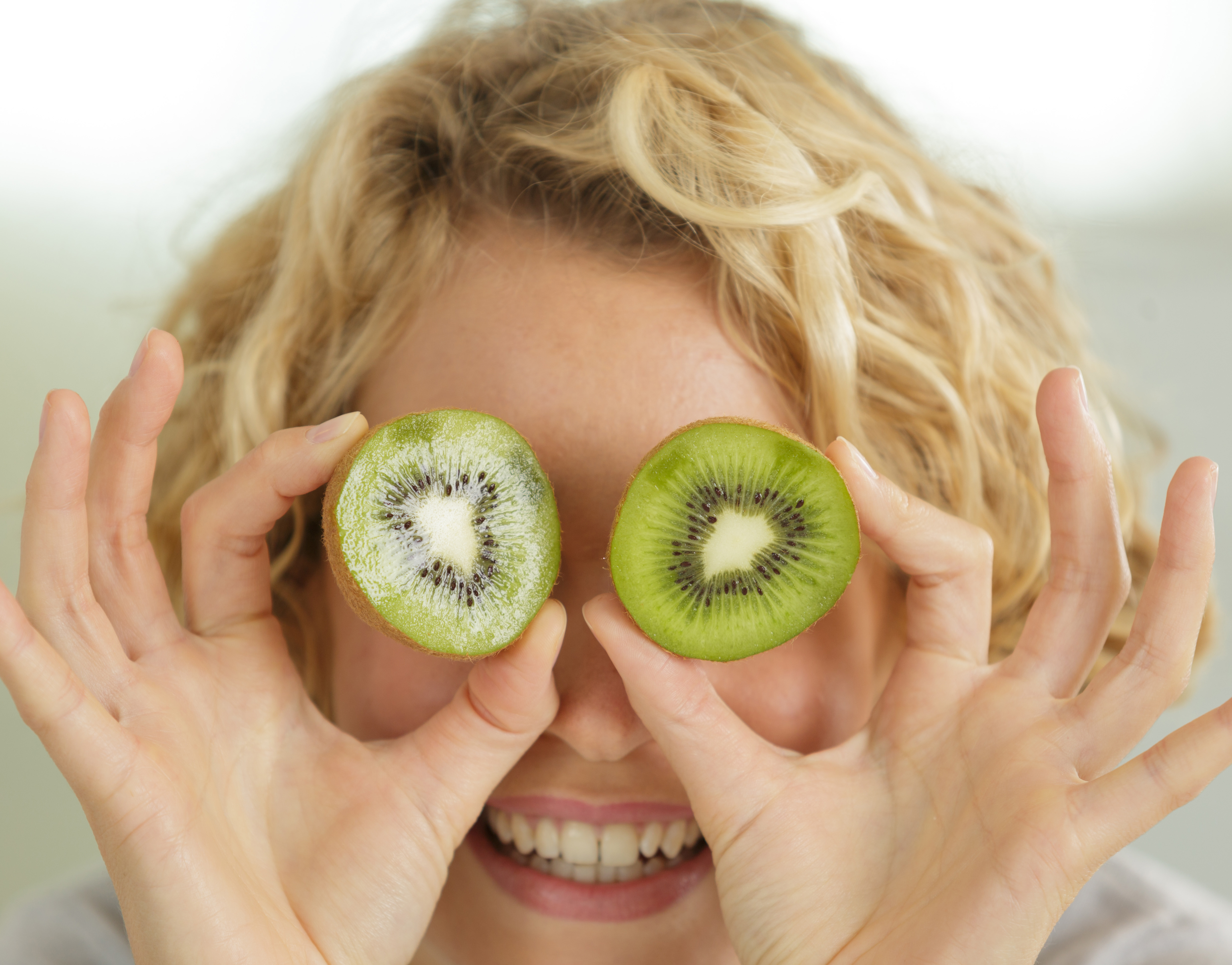 Good nutrition is important to keep your eyes healthy. Researchers have linked two very important eye nutrients that play a key role in healthy vision. Lutein (LOO-teen) and Zeaxanthin (zee-ah-ZAN-thin), both are potent antioxidants and are best known for protecting your eyes and may reduce your risk for
Good nutrition is important to keep your eyes healthy. Researchers have linked two very important eye nutrients that play a key role in healthy vision. Lutein (LOO-teen) and Zeaxanthin (zee-ah-ZAN-thin), both are potent antioxidants and are best known for protecting your eyes and may reduce your risk for 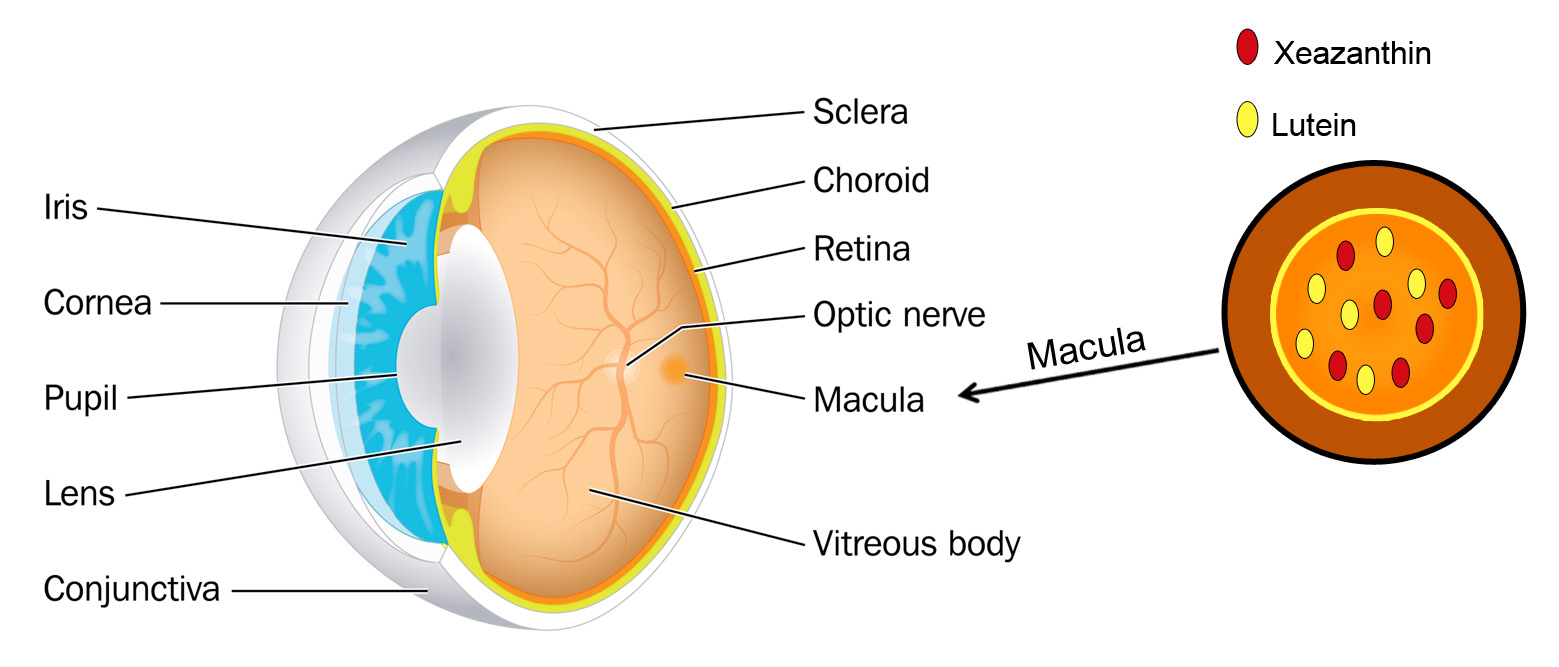
 Diets rich in these two nutrients may help hold off age-related eye diseases. The best natural food sources of lutein and zeaxanthin are green leafy vegetables and other green or yellow vegetables. Among these, cooked kale and cooked spinach top the list.
Diets rich in these two nutrients may help hold off age-related eye diseases. The best natural food sources of lutein and zeaxanthin are green leafy vegetables and other green or yellow vegetables. Among these, cooked kale and cooked spinach top the list.

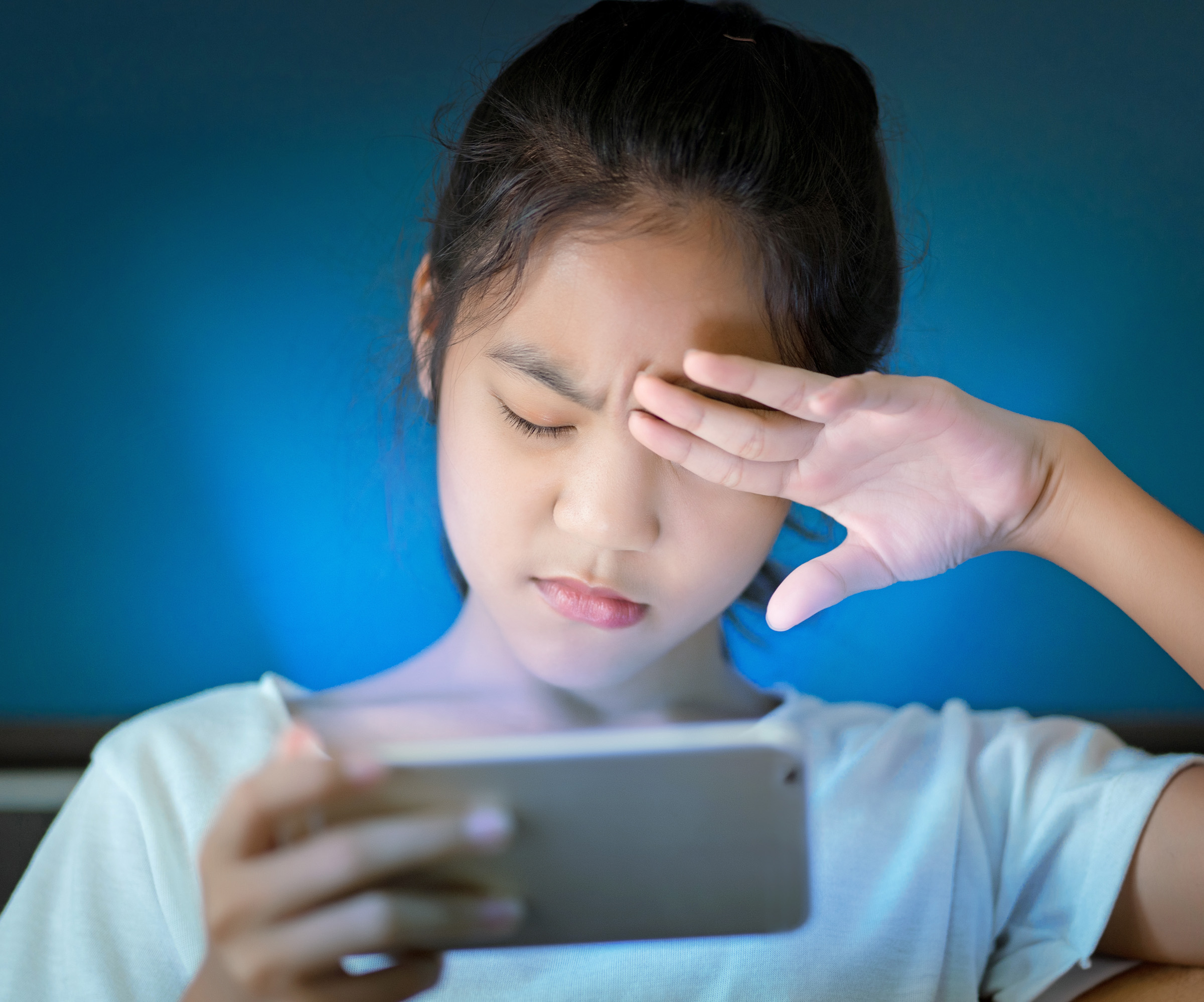
 Tom Sullivan
Tom Sullivan

 Lauren Hauptman
Lauren Hauptman Harsh weather conditions can reduce the natural moisture in your eyes and the irritation usually results in a burning or itching sensation that often leads to rubbing or scratching your eyes which can worsen the symptoms. Sometimes it feels like there is a foreign object in your eye and for some, dry eyes can even cause excessive tearing, as your eyes try to overcompensate for their lack of protective tears. Prolonged, untreated dry eyes can lead to blurred vision as well. Between the harsh winter winds outside and the dry heat radiating inside, our eyes are very quickly irritated and dried in the winter months. The result is itchy, dry eyes that may cause pain, blurred vision, a burning sensation, or even watery vision as our eyes try to compensate for the dryness.
Harsh weather conditions can reduce the natural moisture in your eyes and the irritation usually results in a burning or itching sensation that often leads to rubbing or scratching your eyes which can worsen the symptoms. Sometimes it feels like there is a foreign object in your eye and for some, dry eyes can even cause excessive tearing, as your eyes try to overcompensate for their lack of protective tears. Prolonged, untreated dry eyes can lead to blurred vision as well. Between the harsh winter winds outside and the dry heat radiating inside, our eyes are very quickly irritated and dried in the winter months. The result is itchy, dry eyes that may cause pain, blurred vision, a burning sensation, or even watery vision as our eyes try to compensate for the dryness. I can only imagine my wife’s beautiful face. Oh sure, I’ve touched it and kissed it many times. I’ve felt the lines with the tips of my fingers, tracing our lives together, and I’ve heard her smile. I understand that’s not really seeing it. It’s not seeing her eyes as they sparkle with something funny I said; or, when she looks at me with love reserved only for those who are truly in love.
I can only imagine my wife’s beautiful face. Oh sure, I’ve touched it and kissed it many times. I’ve felt the lines with the tips of my fingers, tracing our lives together, and I’ve heard her smile. I understand that’s not really seeing it. It’s not seeing her eyes as they sparkle with something funny I said; or, when she looks at me with love reserved only for those who are truly in love.